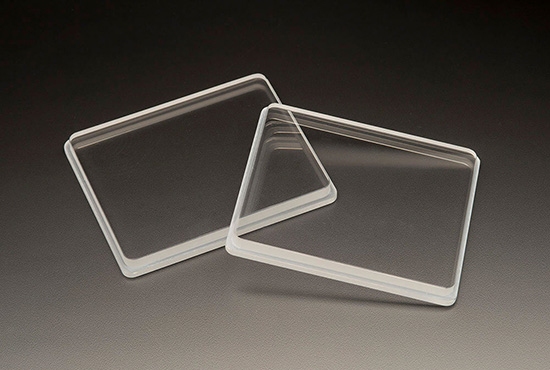High-end application fields and market analysis of quartz glass

Quartz glass is known as the “crown” in glass materials. It is a kind of glass with SiO2 as a single component, which has super mechanical properties, thermal properties, optical properties and electrical properties. It plays an irreplaceable role in semiconductors, optical devices, optical communications, solar energy and other industries. High-purity quartz sand is currently the main raw material for smelting quartz glass instead of crystal ore.
Characteristics of quartz glass
(1) In terms of thermal properties, quartz glass has good resistance to high temperature deformation and thermal vibration. Its softening point (1665°C) is close to the melting point of platinum; the average linear expansion coefficient is very low (α=5.4×10-7/°C), which is only 1/10~1/20 of ordinary glass, that is, it is quickly put into high temperature. In cold water, it won’t shatter.
(2) In terms of chemical properties, quartz glass is extremely inactive and is a good acid-resistant material (except for hydrofluoric acid), and does not react with acids even at high temperatures. It is especially suitable for high-temperature acid-resistant combustion, cooling devices, preparation and storage devices for acid chemicals, and various chemical experimental glassware.
(3) In terms of optical performance, it has good light transmittance for the entire spectrum.
(4) In terms of electrical applications, quartz glass is an excellent insulating material. The resistance value (1016Ωm) at room temperature is 100 times that of ordinary glass (1014Ωm), which is suitable for manufacturing high-frequency and high-voltage insulators with high temperature resistance.
Application fields of quartz glass
(1) Semiconductor: Quartz products are important semiconductor consumables and are used in the whole process of semiconductor processing. The silica in the quartz glass has high purity and stable chemical properties, and does not react with any acid except hydrofluoric acid and phosphoric acid. The requirements of cleaning and other containers are widely used in the semiconductor production process.
(2) Optical fiber: Silica glass material is the main consumable material in the production of optical fiber preform and optical fiber drawing. The refractive index of quartz glass is extremely low, the absorption coefficient is small and the light transmission band range is wide, and optical fiber, as a light transmission tool transmitted by the principle of total internal reflection, has extremely high requirements on the refractive index, so quartz glass is widely used in optical fiber manufacturing , the main products are preform, furnace tube, quartz tube and so on.
(3) Optics: Components composed of quartz glass are key components in optical instruments. Transparent quartz glass has good optical properties and low refractive index, and can meet any light transmission band in the range of 185-3500mμ, so it can be used as both an ultraviolet-transmitting material for optical instruments and an infrared-transmitting material.
(4) Photovoltaic: In the production and processing links in the photovoltaic field, quartz glass products are rigid consumables. Quartz crucible made of quartz glass is generally used as a container for molten polycrystalline silicon material due to its cleanliness, homogeneity and high temperature resistance. It is used for the subsequent process of pulling monocrystalline silicon rods/polycrystalline silicon ingots.
(5) Electric light source: In the field of electric light source, quartz glass electric light source products are widely used in household, medical, transportation, entertainment and other industries. Xenon lamps for automotive lighting, ultraviolet germicidal lamps for sanitation, and metal halide lamps for entertainment all use quartz glass as lighting fixtures.
(6) Military industry: In the aerospace field, quartz glass products are the core components of spacecraft and space shuttles. Quartz glass has low density, strong compressive ability and good optical performance, which meets the requirements of space window materials for filtering ultraviolet radiation and radiation resistance, and avoids the formation of “color centers” under the irradiation of high-energy rays. It is widely used in satellites and spacecraft.
